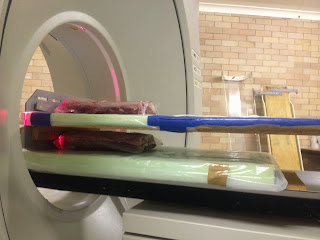At the moment there is industry interest in determining the financial benefits of hot meat processing (hot-boning) as opposed to the more conventional methods used in Australia (cold-boning).
Hot-boning is gaining interest because of potential environmental and economical benefits. Hot-boning involves the removal of meat (muscles) from the carcass prior to chilling. The advantages in this is that the only parts of the carcass that are chilled are those that are edible. This reduces the space needed for chilling and means that the space can be used more efficiently. This then has flow on effects for the reduction of energy consumption and associated costs. There is also less weight loss with hot-boning as meat is packaged before chilling as opposed to cold-boning where carcasses are subject to evaporative losses through chilling.
Currently, cold-boning plants utilise trained meat graders to visually assess marbling (intramuscular fat), which is a standard practice. This is a problem in a hot-boning scenario because the fat is not in its solid state and cannot be seen with the naked eye as easily. So.... there has been investigation in my experiment into the use of CT scanning to assess marbling. This idea raised the questions though, can the CT scanner accurately detect the marbling in the meat at different temperatures and is there a solid relationship between MSA Grading (visual assessment), chemical fat analysis and CT analysis?
Whilst the visual grading method is used for chilled carcasses, it is a subjective measurement. This experiment looks at using technology such as CT analysis as an objective measurement of marbling in a hot processing plant situation.
Whilst the results are at a preliminary stage, I am very excited that I will have contributed to an industry project!
In a nutshell, these photos explain what my project was all about. Check them out!
 |
| Many hours were spent in the chiller doing temperature trials- best place to be in summer! |
 | ||
Ever had a CT scan? This is the same scanner used for humans!
|


Certainly sounds like an honours project thats relevant to the industry. I was a qualified MSA grader so I find this all very interesting!
ReplyDelete